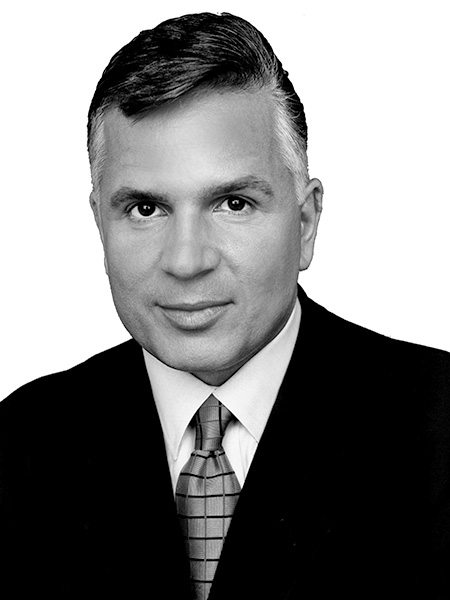A more fragmented world of work creating new requirements for corporate real estate
Insight
08 September 2024
The Future of Work Survey 2024
Listen to article •
Read time: 14.4 min

JLL’s biennial Global Future of Work survey has been exploring the evolving world of work since 2011 and is recognized as a leading industry publication on the emerging CRE trends. This year, we draw on the experience of over 2,300 CRE decision-makers and the perspectives of JLL experts, highlighting the key areas of focus and strategies CRE leaders should be prioritizing over the next 12-24 months and beyond. Future of Work 2024 is part of JLL’s Future Vision program, a scenario-led exploration of the future of Real Estate.
An increasingly complex and dynamic environment creates new challenges for corporate real estate
In an increasingly complex, ambiguous and dynamic environment, companies are adopting a cautiously positive outlook, JLL’s latest Global Future of Work survey finds. The global survey of decision makers shows that organizations are planning to increase and rebalance organizational headcount in the coming years and many are ready to invest into their real estate, expecting to increase budget and footprint. However, most organizations will also retain a sharp focus on workplace efficiency, making smarter and more responsible use of their real estate portfolio. More than 60% of respondents expect to see increased workplace utilization over the next five years.
According to survey respondents, the biggest constraint on operations is the difficulty to think long-term given the fast-changing and dynamic environment. This manifests nowhere more than the CRE landscape, where professionals have had to constantly adapt to major changes to the ways people work in the last few years. This cautious approach to uncertainty has resulted in complexities for CRE teams, not least of which is the need to invest for the future by transforming workplaces, while maintaining an acute focus on efficiency and costs.
JLL has identified five areas of focus for corporate real estate teams
The 2024 Future of Work program will investigate these factors in a series of articles, beginning here with a look at the implications of shifting work patterns and their effects on workplace expectations. We will examine what this means for CRE leaders and their teams and how they should respond to meet the evolving needs of their organizations and staff.
Six factors are driving the need for change
- A desire to increase and rebalance organizational headcount, in an attempt to recruit the right talent and skills to be future-ready;
- A strong focus on organizational efficiency that requires smarter long-term investment decisions;
- Competing visions of ‘how work should be done’ to achieve the best performance – often coexisting within the same organization;
- An attempt from ‘Office advocates’ to promote equal work practices among their workforce and to design more inclusive workplaces;
- The recognition that flexibility in workstyles is the best way to strengthen organizational performance among ‘Hybrid adopters’;
- Finally, an opportunity for CRE teams to contribute to the Employee Value Proposition (EVP) discussion, by defining a compelling and evolutionary office model for their organization.
Explore research highlights
Targeted headcount growth to address emerging skills gaps
Despite the tight labor markets, the recent mass layoffs in several industries and the rise of AI and automation, survey respondents feel positive about the future. 64% expect their headcount to increase by 2030. But a rebalancing of skills is also taking place, as employers are looking to recruit the right profiles that will enable them to be future-fit.
The three most-cited corporate goals in the 2024 survey are: growing revenue through new markets and M&A, attracting and retaining talent and achieving organizational efficiency. The latter raises ongoing questions around the best ways to achieve smart growth and to reconcile potentially competing expectations, leaving organizations with a delicate balancing act. What’s the best way to secure organizational efficiency and attract the right talent? Should employees work together in the office, taking advantage of face-to-face interactions? Or should they be offered maximum flexibility, to allow them to decide where and when they can perform at their best? And what type of workplaces should CRE teams offer?
While approaches to office attendance vary widely, decision makers appear ready to invest. 65% of respondents said they expect their overall CRE budget to increase between now and 2030, but it will have to be invested cleverly and responsibly, in a context where CRE teams are still struggling to be perceived as value drivers and not merely cost centers.
A new split between ‘Hybrid adopters’ and ‘Office advocates’
The 2022 Future of Work survey found that 77% of decision makers thought hybrid work was key to attracting talent, however in 2024 the momentum has moved strongly towards office-based work. There is now a broadly even split between those organizations which favor some form of hybrid workstyles and those expecting to see employees back in the office full time.
Today, 44% of organizations can be characterized as ‘Office advocates’, who would like to see staff in the office five days a week. This compares to just 34% of employees working full time in the office in 2022. Meanwhile, the remaining 56% of ‘Hybrid adopters’ are operating a range of strategies from fully remote to at least three days a week in the office.
Even though there is often a gap between what employers expect and what is happening in reality, CRE leaders must assess whether the return to more office time will continue and what this means for office utilization. They also need to consider how space design can support the coexistence of different workstyles within their organization. For example, planning for full-time attendance for populations of engineers, while tech support teams might work in a hybrid manner. Despite this complex and evolving landscape, it’s clear that the office is central to work: 85% of organizations have a policy of at least three days of office attendance per week. And 43% expect the number of days in the office to increase by 2030, though this may still be within a hybrid work strategy for many organizations.
Competing visions of how work should be done
The hybrid adopter and office advocate styles actually reflect a wide spectrum of visions and might even coexist within the same organization - depending on job requirements. Organization type and location are also influencing factors. The survey shows that ‘Hybrid adopters’ are more likely to be large organizations of 10,000+ employees and based in EMEA, where hybrid workstyles are now considered a key component of the Employee Value Proposition. Hybrid also appeals to certain types of organization, such as those in e-commerce, energy & renewables, technology and life sciences. Notably, these are all new economy, knowledge-based industries where staff attraction and retention are crucial to success in high-growth sectors.
On the other hand, ‘Office advocates’ are more likely to be small to medium sized companies with 1,000-9,999 employees and to be based in APAC or the Americas. Interestingly, they are largely in industries which are either customer-facing or have a large proportion of non-office staff working onsite, such as healthcare, retail and manufacturing. Their preference suggests these organizations do not want disparity in work practices – management at home and workers on the shop floor - and are using office-based working to build solidarity across the whole workforce.
Strikingly, differences in workstyles translate into distinct and complementary approaches to the workplace. Perhaps as a consequence of the need to make the five-day-a-week workplace inclusive, Office advocates are making a concerted effort to address diverse workplace needs: from accessibility and generational requirements, to culture and neurodiversity specificities, 1 in 2 Office advocates consider themselves as highly efficient in addressing a wide spectrum of needs, while only 1 in 3 feels so among Hybrid adopters. They are also more likely to pay a premium to occupy buildings with leading health and wellbeing credentials, demonstrating higher readiness to invest in the provision of high workplace experience standards. Once again, those nuances in the approach can apply within the same company and CRE teams need to orchestrate them smartly and subtly.
Shifting sands: business expectations of the CRE function
As a result of their growth projections and office attendance policies, more than half of respondents expect their total footprint to increase over the next five years. In parallel, more than 60% expect to see increased utilization of their office space and they are ready to explore a wide range of possibilities in order to achieve this.
While 39% of organizations could envisage introducing different pay and benefits to employees who attend the office regularly versus those who work completely remotely, 37% could consider providing a network of additional workspaces closer to where their people live. On the other side of the spectrum, one-third said they could envisage going completely remote by 2030 with no office space at all, relying instead on virtual spaces and team building events.
This is another signal that organizations are not yet clear on the best approach and that many options are still being considered. CRE decision-makers must therefore assess how best to support their own organization’s chosen workplace strategy and build an evolutionary office program, able to deal with a complex and shifting environment.
How can corporate real estate deliver change?
The Future of Work survey results indicate challenging times ahead for CRE professionals, as they grapple with portfolio and location strategies, as well as the demands of their organizations’ shifting work patterns.
As CRE teams ready themselves to help deliver the most attractive work environment for their organization, while securing organizational efficiency and building a future-ready CRE function, we set out four ways in which decision-makers can succeed:
The 2024 Future of Work survey underscores the evolving nature of work patterns and the consequential expectations placed on CRE. Organizations are actively seeking support from CRE to address their dynamic short and long-term requirements, while also grappling with the simultaneous and possibly contradictory need for both efficiency and growth.
Explore more of JLL's latest insights on World Economic Forum themes at our dedicated Davos page.


